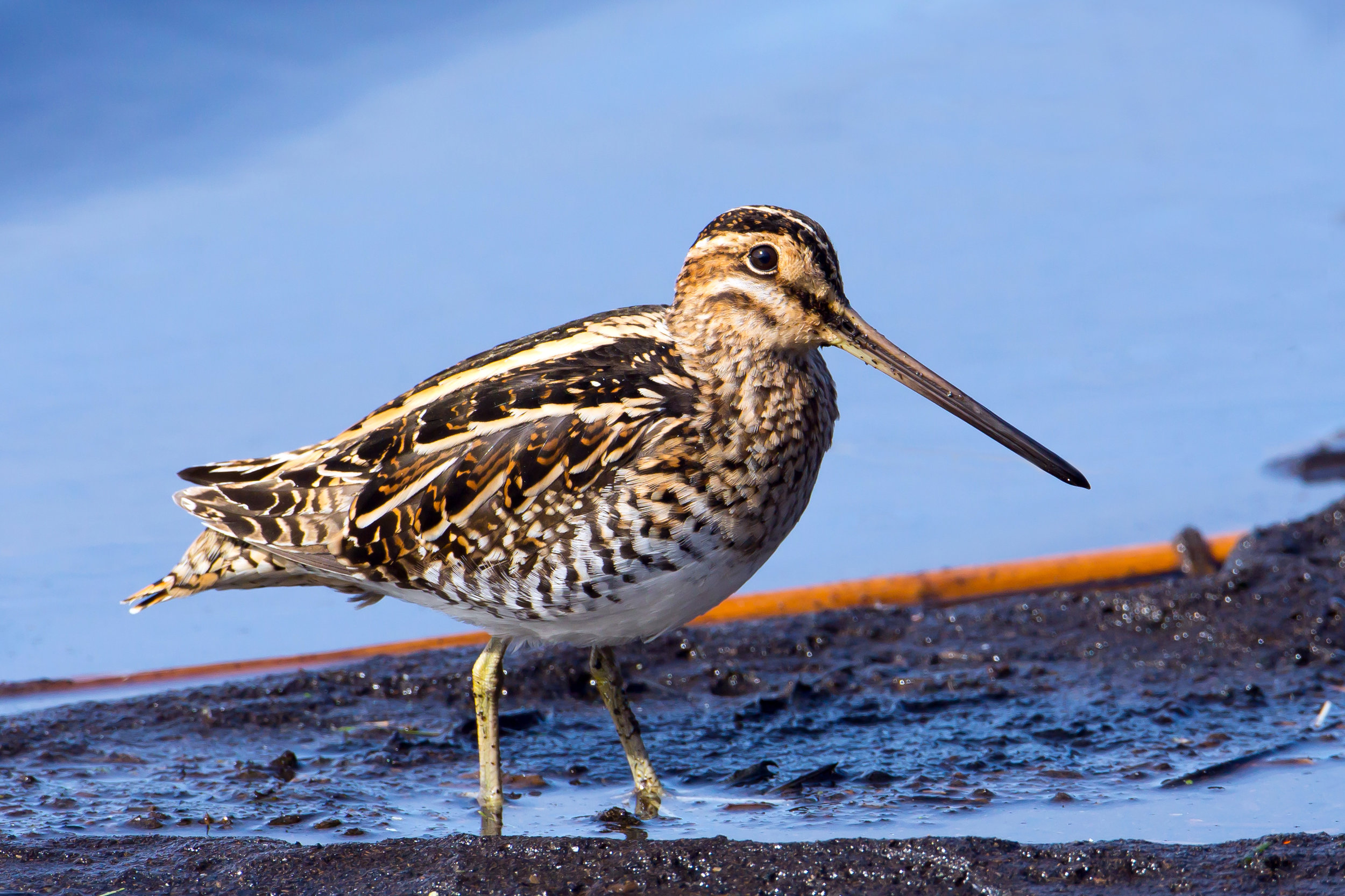Bird of the Month: Wilson's Snipe
By Hugh Jennings
PC: Mick Thompson (Wilson’s Snipe)
Scientific Name: Gallinago gallinago
Length 11 in
AOU Band code WISN
The Wilson's Snipe (WISN) is about 11".(Its name was changed from Common Snipe, Gallinago gallinago, in 2002.) It is a secretive bird found in peat bogs, marshes, and wet fields.
The bill is extremely long and straight. It has a plump body and short legs. It is boldly patterned above and below, with a white belly and distinctive striped head and rusty tail. The buff breast and flanks are heavily spotted and barred. The bill is dark with a pale base and the legs are light dull green.
It is very secretive in breeding season, and usually seen only when flushed as it zigzags away on long, pointed wings accompanied by a grating scaip call. Both sexes do unusual aerial displays during breeding (female does it mostly at beginning of breeding season). The bird rises 300-360 ft., then dives down. Air vibrating through the two outer tail feathers makes a "winnowing" sound often described as huhuhuhuhu. This behavior can usually be seen in early morning or evening over the nesting area. It also has a song that is a repetitive chip-a, chip-a, chip-a, chip-a.
It feeds by plunging bill into soft ground, eating larvae of craneflies and other insects, earthworms, crayfish, mollusks, frogs and seeds.
It has a nest of grasses, leaves and moss in a scraped depression in a bog. It lays four eggs, olive-buff with spots. The eggs hatch in 18-20 days and the young fledge in 14-20 days. The young are "precocial" which mean they are feathered when hatched and can generally feed themselves. The WISN have only one brood during a year. It breeds throughout northern United States and Canada to Alaska and winters on west coast and in southern US and Central to South America.


